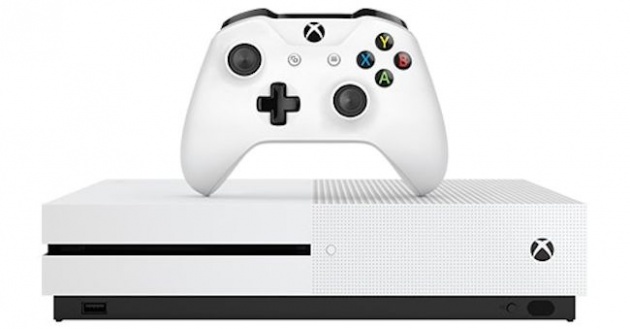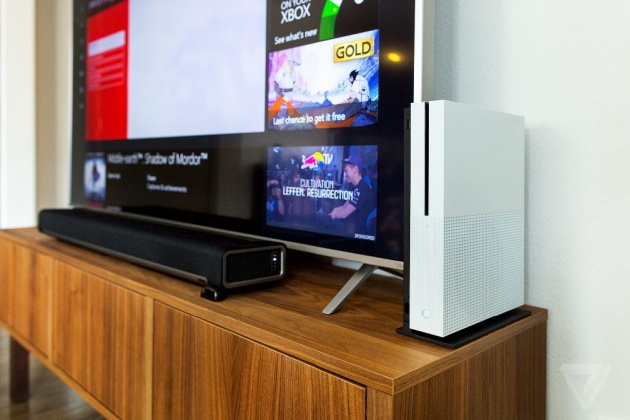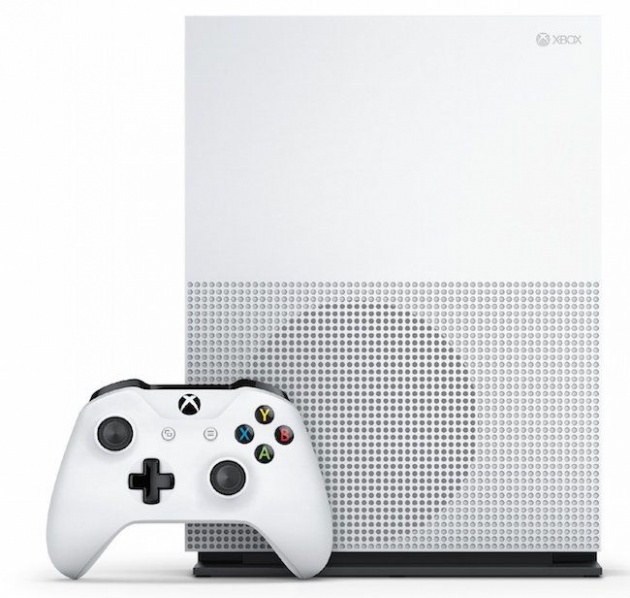Considering how significant the Xbox One S is, it was launched with remarkably little pomp and ceremony by a seemingly low-on-confidence Microsoft.
Some may argue this is no bad thing given the marketing disaster that accompanied the launch of the original Xbox One. But to me launching the ’S’ so quietly seems to have compounded the mistake Microsoft made of unveiling it alongside the significantly more powerful Project Scorpio console, leaving it feeling like an almost apologetic release – something just rushed out to tide the market over until Scorpio rolls into town at the end of 2017.

The Xbox One S makes more difference to gaming than people are giving it credit for
The Xbox One S is so much more than just a games console that I can imagine some, maybe even many of the people who buy it treating its gaming abilities as an added bonus rather than its main attraction. It is, though, still rightly positioned first and foremost as a games machine, so let’s start off by looking at the two ways in which the Xbox One S genuinely transforms the gaming experience rather than just delivering the tiny performance gains I’ve seen discussed elsewhere.
First, there’s its 4K upscaling – its ability to convert Xbox One games to 4K/Ultra HD before outputting them to a 4K/UHD television.
Upscaling has become something of a dirty word in AV and gaming circles over the years, with many coming to believe – with some justification – that using processing to convert lower resolution sources to higher resolutions can actually reduce overall picture quality rather than improve it. It’s also been argued persuasively elsewhere on Forbes that the Xbox One S’s 4K upscaling doesn’t make much sense from a gaming perspective given that 4K TVs can upscale from HD too.

The Xbox One S, though, tramples unceremoniously all over these arguments by delivering quite simply one of the finest upscaling performances I’ve seen.
My years of experience in the AV world have taught me that getting good quality source equipment to upscale resolution rather than leaving it to a screen often yields superior results. But even knowing this didn’t prepare me for just how much cleaner, sharper and less noisy games look on a 4K TV via the Xbox One S than they do via the original Xbox One.

The other way in which the Xbox One S transforms gaming visuals is with its introduction of high dynamic range (explained in jargon-free terms here). To be clear, at the time of writing I haven’t yet been able to play games in HDR from the Xbox One S; the first titles to support HDR are still a few weeks away from launch. I have, though, watched countless hours of HDR video already, as well as glimpsing demos of HDR games running at various trade shows. And this experience has shown that HDR’s expanded brightness range and the wider color spectrums that usually accompany it completely transform the impact and quality of the visual experience, making environments feel more solid, realistic, and involving.
So far as I know three games for the Xbox One have been confirmed as providing additional HDR support for the Xbox One S: Forza Horizon 3,Gears of War 4, and Scalebound. But more are sure to follow, and this should be a cause of celebration for game and AV fans alike.
Graphics aren’t everything when it comes to a great gaming experience, of course. But once you’ve felt the difference that greater clarity and HDR can bring to your sense of immersion in games like Fallout 4 and Battlefield, the suggestion that graphics don’t matter at all just doesn’t hold water.





